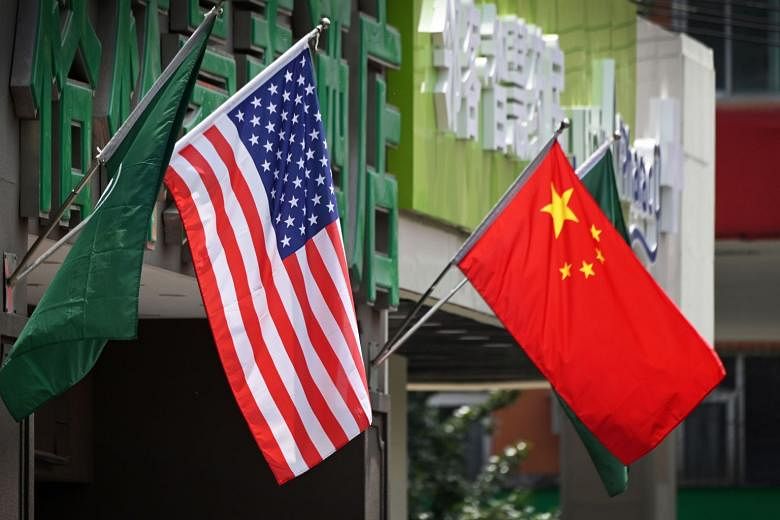WASHINGTON (BLOOMBERG) - The US and China announced on Friday (Dec 13) that they reached a phase one trade deal but provided little detail on what exactly will be part of the agreement.
US Trade Representative Robert Lighthizer brought a print-out of the 86-page agreement to a briefing with reporters on Friday afternoon as a "show-and-tell" to prove that it's all done and written up.
Mr Lighthizer said it's an important step forward for the two countries, while acknowledging that a lot of big issues are outstanding and need to be addressed in future negotiations.
Here's what we do and don't know:
TARIFFS
As part of the deal, the US will halve its 15 per cent tariff on about US$120 billion (S$162.42 billion) in Chinese goods. It will also suspend indefinitely planned duties that were set to take effect on Sunday that would have covered consumer favourites such as smartphones and laptops.
That leaves roughly US$250 billion taxed at 25 per cent and US$120 billion that will be subject to a 7.5 per cent duty once the agreement takes effect. Any further tariff reductions by the US will be linked to the conclusion of future phases, Mr Lighthizer said.
China, on the other hand, didn't agree to specific tariff reductions in the deal. Instead, the nation's obligation is to make the purchases and to have an exclusion process for its tariffs. The country has in recent months lowered some retaliatory tariffs including some on cars imported from the US.
PURCHASES
A USTR fact sheet refers to this part of the deal as the Expanding Trade chapter. According to the US, China has agreed to increase its total purchases of US goods and services by at least US$200 billion over the next two years.
Also included is a commitment by China to increase its buying of US agricultural products to US$40 billion to US$50 billion in each of the next two years.
Mr Lighthizer told reporters "these are numbers that are realistic and that we arrived at together." The specific breakdown of targets for individual commodities will be classified and not disclosed to the public.
IP, FORCED TECH TRANSFER
The deal will centre around what a senior administration official called "state-of-the-art" IP commitments and a breakthrough on forced technology transfer. Those issues are also at the heart of an investigation that led US President Donald Trump to raise tariffs on China in the first place.
Among the specific commitments USTR announced on Friday: China has agreed to end its longstanding practice of forcing or pressuring foreign companies to transfer their technology to Chinese companies as a condition for obtaining market access, administrative approvals, or receiving advantages from the government.
China also commits to provide transparency, fairness, and due process in administrative proceedings and to have technology transfer and licensing take place on market terms.
ENFORCEMENT
The agreement will include a dispute-resolution mechanism that will serve as the enforcement arm. That process is in line with how other US trade agreements are enforced.
Complaints of one party will be brought to a US-China working group and if officials can't resolve their dispute, a decision will be made at the ministerial level of what action to take. That action could include tariffs or other measures, Mr Lighthizer said, though he sounded optimistic that he thinks China will keep their promises.
WHAT COMES NEXT?
Lawyers are now reviewing the text so that it's ready to be signed in the first week of January. It's also being translated. Mr Lighthizer and his counterpart, Vice-Premier Liu He, will likely do the signing in Washington. Once it's inked, the deal will take effect roughly 30 days later.
WHAT ABOUT PHASE TWO?
The president announced on Friday that negotiations for the next phase would start immediately, though his trade chief said no date for future talks had been set.
The first phase leaves contentious issues unresolved, including US demands that China curb subsidies to state-owned firms. The US says future talks will also focus on digital trade, data localisation, cross-border data flows and cyber intrusions.

